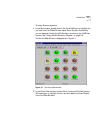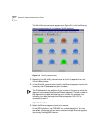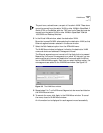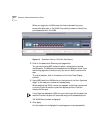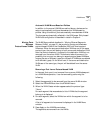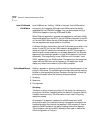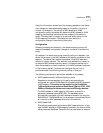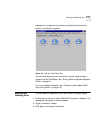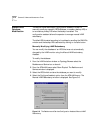
5-10 CHAPTER 5: NETWORK MODIFICATION TASKS
Local VLANs and
VLAN Move
Local VLANs act as “holding” VLANs in the event that LAN Emulation
connectivity is incomplete. Although local VLANs cannot be directly
established by the ATMVLAN manager, they can be activated during a
VLAN Move operation involving ATM-based VLANs.
When Ethernet segments in a device are reassigned to a different VLAN
they are detached from the LEC of the old VLAN and attached to the LEC
of the new VLAN. When the new VLAN already exists in the device, then
the new segments are simply added to the others.
A different situation occurs when the new VLAN does not yet exist in the
device. A new LEC for the new VLAN needs to be established in the
device and that LEC needs to be connected to its LES. This process can
take time and in some cases may not succeed. Meanwhile, the Ethernet
segments to be moved are placed in a local VLAN created to hold them
temporarily. This is signified by a new VLAN icon with the label “Local
VLAN” appearing on the VLAN window. The segments to be moved are
inside the local VLAN icon and will appear on the destination VLAN
display only when the connection to the LES is complete.
Policy-Based Moves Adding a segment or device to a policy results in the enforcement of the
policy on that device. The policies may be configuration policies, security
policies or other predefined policies. Devices or proxies that enforce the
policy continuously follow the following three procedures:
1 Snooping
2 Resolution
3 Configuration
Snooping
The device or proxy enforcing a policy will first snoop the frames going
throughout the device. Snooping allows the device to recognize various
frames or frame contents. This information is then used in the policy
resolution process.
For example: If a segment is assigned to a MAC-based auto-VLAN
configuration policy, the device containing that segment snoops on the
frames originating from behind that segment. After snooping it tries to
resolve the MAC address of the station residing behind that segment.
This information (the source MAC address) is then used to resolve the
VLAN configuration of that port.




